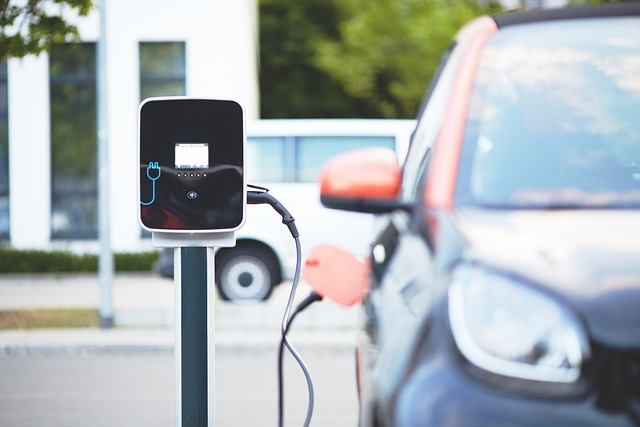Looking to register your car in California? This comprehensive guide breaks down the process step-by-step. First, understand the state’s unique car registration requirements and essential documents needed, like proof of insurance and ownership. Next, undergo mandatory DMV VIN verification to confirm your vehicle’s identity. After gathering everything, complete the online registration process or visit a local DMV. Finally, pay fees and receive your personalized license plate. Simplify car registration in California with these easy-to-follow steps, including key considerations for dmv vin verification.
- Understand California Car Registration Requirements
- Gather Necessary Documents for Car Registration
- Visit Your Local DMV for VIN Verification
- Complete Online Car Registration Process
- Pay Car Registration Fees and Receive Plate
Understand California Car Registration Requirements

Before registering your car in California, it’s crucial to understand the state’s specific requirements. The California Department of Motor Vehicles (DMV) mandates that all vehicles operated within the state be properly registered and have undergone a thorough inspection. This includes verifying the vehicle identification number (VIN) to ensure its authenticity and history.
One important step in the registration process is the DMV VIN verification, which involves cross-referencing your car’s unique VIN with state records to check for any outstanding issues or previous accidents. To make this process more convenient, many owners opt for a mobile vin verifier or mobile vin inspection service, allowing them to complete the necessary checks remotely before proceeding with registration.
Gather Necessary Documents for Car Registration

Before you start the registration process, it’s crucial to gather all the essential documents for car registration in California. This includes your vehicle’s Registration Application (Form DV305), which can be obtained from the California Department of Motor Vehicles (DMV). Additionally, you’ll need proof of insurance, a valid driver’s license, and the Certificate of Title (or Proof of Ownership) for the vehicle. The Vehicle Identification Number (VIN) plays a critical role in this process; ensure it’s accurately displayed on all documents through a successful DMV VIN verification.
A key step is conducting a VIN inspection to validate the vehicle’s information. This can be done conveniently through mobile vin verification services, allowing you to save time and effort by having the inspection completed at your location. By having these documents ready and ensuring accurate VIN data, you’ll streamline the registration process at the DMV.
Visit Your Local DMV for VIN Verification

Before registering your car in California, it’s crucial to undergo DMV VIN verification. This process involves visiting your local Department of Motor Vehicles (DMV) office with your vehicle and its associated documents. The DMV will inspect the vehicle to ensure it meets safety standards and matches the provided Vehicle Identification Number (VIN). This step is essential for accurate record-keeping and preventing fraud, ensuring that only legitimate vehicles are registered within the state.
During this visit, you can expect a thorough examination of your car’s identity, including checking the VIN on the vehicle’s registration documents against the one etched into its chassis. If everything aligns, the DMV will proceed with processing your registration. Otherwise, they may require additional paperwork or repairs to ensure compliance. Leveraging mobile vin verification services can also simplify this process by providing a swift and convenient alternative for VIN inspection, especially if you’re short on time or prefer remote verification options.
Complete Online Car Registration Process

Completing your car’s registration online is a straightforward process in California, simplifying the task for many vehicle owners. You’ll first need to gather essential documents, including proof of insurance, your driver’s license, and the vehicle’s title. Once you have these ready, log onto the official California DMV website, where you can initiate the registration process.
The initial step involves entering your basic information and then providing the Vehicle Identification Number (VIN) for your car, which is typically located on the vehicle’s registration label or under the hood. Following this, you’ll be prompted to conduct a DMV VIN verification, ensuring the vehicle’s authenticity. Many users opt for a convenient mobile vin verifier or even perform a quick mobile vin inspection for peace of mind before proceeding with the registration.
Pay Car Registration Fees and Receive Plate

After completing the registration application and providing necessary documents, it’s time to settle the car registration fees. The cost varies based on your vehicle type, age, and other factors. You can typically pay online, over the phone, or in person at a California Department of Motor Vehicles (DMV) office. Once your payment is processed, you’ll receive your vehicle’s license plate.
For a seamless process, consider using a mobile vin verifier or conducting a vin inspection to ensure all information is accurate before visiting the DMV. This step guarantees that your car’s registration complies with California’s requirements, streamlining the overall procedure and saving you potential headaches down the road.
Registering a car in California is a straightforward process that involves understanding specific requirements and gathering essential documents. By completing the steps outlined, including DMV VIN verification, you can efficiently register your vehicle online or at a local DMV. Ensure all paperwork is in order to avoid delays and receive your unique license plate, marking a successful registration experience.



